#freemasons hall
Explore tagged Tumblr posts
Text


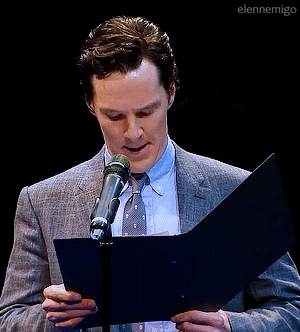



Benedict Cumberbatch (and Jude Law) joined Letters Live show at the Freemasons' Hall in London to read these amusingly contrasting letters. (2016ish)
#benedict cumberbatch#benedictcumberbatchedit#letters live 2016#Freemasons' Hall#dailymenedit#mensource#dailymarvelkings#marvelcastedit#dilfgifs#mcuchallenge#useroptional#userrobin#elegifs#new old video#i love his dark hair
165 notes
·
View notes
Text

I'm describing my transition in these terms from now on, actually. I feel foolish for not having come up with this myself; it makes me feel like a lesser transsexual for it, in fact.
(Also, the person that was being discussed is cis)
#trans#transgender#lgbt#lgbtq#ftm#mtf#nonbinary#transphobia#transphobia tw#i looked up what masonic was and unsurprisingly it refers to the freemasons#okay maybe i'm an out of touch zoomer but i only know the bare minimum about freemasonry and. is gender alchemy part of it?#my great(-great?) grandfather was a freemason actually. is that why i'm a gender alchemist.#okay but anyway. this trans-accusation/transvestigation is flat-earth level conspiracy#and i don't trust that this whole stuff just sprouts up on its own#sometimes i'll wander the halls of the internet and sometimes i hope it's all just ironyposting you know?#described images#image description in alt
28 notes
·
View notes
Text
Unveiling the Secrets of the Bruton Vault
Unveiling the Secrets of the Bruton Vault: Exploring Hidden Treasures, Freemasonry, and the Enigmatic Histories of Williamsburg.
Exploring the legends of Victorio Peak led me down a fascinating rabbit hole, uncovering tales of buried treasures and hidden vaults. One such intriguing story revolves around the Bruton Parish Church in Williamsburg, Virginia. While the church holds its own historical significance, it is said to house a secret underground vault that could unlock profound secrets related to religion, philosophy,…

View On WordPress
#Bruton Parish Church#Bruton Vault#christopher wren#College of William and Mary#francis bacon#Freemason#Harold V.B. Voorhis#Manly Palmer Hall#Marie Bauer#Marie Bauer Hall#New Atlantis#Queen Elizabeth I#Robert Dudley#Rosicrucians#secrets#Shakespeare#The Royal Society#The Wren Building#Treasure#Virginia#William Shakespeare#williamsburg
2 notes
·
View notes
Text
Freemasons Gather in Kumasi to Honour Most Worshipful Bro Otumfuo Osei Tutu II
[vc_row][vc_column][vc_column_text]Freemasons from across the land congregated in Kumasi on May 25, 2024, to pay homage to Most Worshipful Brother Otumfuo Osei Tutu II, Grand Patron of the Grand Lodge of Ghana. It was also a double celebration of his 25 years on the Golden Stool and being in Freemasonry for 25 years. The occasion was held at the Bro Otumfuo Sir Agyemang Prempeh II Masonic Hall,…

View On WordPress
#Bro Otumfuo Sir Agyemang Prempeh II Masonic Hall#Freemasons#Freemasons in Ghana#Grand Master designate High Chief Osiobe Eric Okotie#Most Worshipful Brother Anthony W. Deline#Most Worshipful Brother Charles William Stanley-Pierre.#Otumfuo Osei Tutu II
0 notes
Text

1 note
·
View note
Text
Notable transgender people from history
Here's the list I put together for when people on non-trans subreddits claim we didn't exist until recently:
Ashurbanipal (669-631BCE) - King of the Neo-Assryian empire, who according to Diodorus Siculus is reported to have dressed, behaved, and socialized as a woman.
Elagabalus (204-222) - Roman Emperor who preferred to be called a lady and not a lord, presented as a woman, called herself her lover's queen and wife, and offered vast sums of money to any doctor able to make her anatomically female.
Kalonymus ben Kalonymus (1286-1328) - French Jewish philosopher who wrote poetry about longing to be a woman.
Eleanor Rykener (14th century) - trans woman in London who was questioned under charges of sex work
[Thomas(ine) Hall](https://en.wikipedia.org/wiki/Thomas(ine)_Hall) - (1603-unknown) - English servant in colonial Virginia who alternated between presenting as a woman and presenting as a man, before a court ruled that they were both a man and a woman simultaneously, and were required to wear both men's and women's clothing simultaneously.
Chevalier d'Eon (1728-1810) - French diplomat, spy, freemason, and soldier who fought in the Seven Years' War, who transitioned at the age of 49 and lived the remaining 33 years of her life as a woman.
Public Universal Friend (1752-1819) - Quaker religious leader in revolutionary era America who identified and lived as androgynous and genderless.
Surgeon James Barry (1789-1865) - Trans man and military surgeon in the British army.
Berel - a Jewish trans man who transitioned in a shtetel in Ukraine in the 1800's, and whose story was shared with the Jewish Daily Forward in a 1930 letter to the editor by Yeshaye Kotofsky, a Jewish immigrant in Brooklyn who knew Berel
Mary Jones (1803-unknown) - trans woman in New York whose 1836 trial for stealing a man's wallet received much public attention
Albert Cashier (1843-1915) - Trans man who served in the US Civil War.
Harry Allen (1882-1922) - Trans man who was the subject of sensationalistic newspaper coverage for his string of petty crimes.
Lucy Hicks Anderson (1886–1954) - socialite, chef and hostess in Oxnard California, whose family and doctors supported her transition at a young age.
Lili Elbe (1882-1931) - Trans woman who underwent surgery in 1930 with Dr. Magnus Hirschfeld, who ran one of the first dedicated medical facilities for trans patients.
Karl M. Baer (1885-1956) - Trans man who underwent reconstructive surgery (the details of which are not known) in 1906, and was legally recognized as male in Germany in 1907.
Dr. Alan Hart (1890-1962) - Groundbreaking radiologist who pioneered the use of x-ray photography in tuberculosis detection, and in 1917 he became one of the first trans men to undergo hysterectomy and gonadectomy in the US.
[Louise Lawrence](https://en.wikipedia.org/wiki/Louise_Lawrence_(activist)) (1912–1976) - trans activist, artist, writer and lecturer, who transitioned in the early 1940's. She struck up a correspondence with the groundbreaking sexologist Dr. Alfred Kinsey as he worked to understand sex and gender in a more expansive way. She wrote up life histories of her acquaintances for Kinsey, encouraged peers to do interviews with him, and sent him a collection of newspaper clippings, photographs, personal correspondences, etc.
Dr. Michael Dillon (1915-1962) - British physician who updated his birth certificate to Male in the early 1940's, and in 1946 became the first trans man to undergo phalloplasty.
Reed Erickson (1917-1992) - trans man whose philanthropic work contributed millions of dollars to the early LGBTQ rights movement
Willmer "Little Ax" Broadnax (1916-1992) - early 20th century gospel quartet singer.
Peter Alexander (unknown, interview 1937) - trans man from New Zealand, discusses his transition in this interview from 1937
Christine Jorgensen (1926-1989) - The first widely known trans woman in the US in 1952, after her surgery attracted media attention.
Miss Major Griffin-Gracy (1940-present) - Feminist, trans rights and gay rights activist who came out and started transition in the late 1950's. She was at Stonewall, was injured and taken into custody, and had her jaw broken by police while in custody. She was the first Executive Director of the Transgender Gender Variant Intersex Justice Project, which works to end human rights abuses against trans/intersex/GNC people in the prison system.
Sylvia Rivera (1951-2002) - Gay liberation and trans rights pioneer and community worker in NYC; co-founded STAR, a group dedicated to helping homeless young drag queens, gay youth, and trans women
Marsha P. Johnson (1945-1992) - Gay liberation and trans rights pioneer; co-founded STAR with Sylvia Rivera
#lgbtqia#lgbtq community#lgbtq#lgbt pride#queer#transfem#trans#transgender#trans pride#transmasc#transblr#gender#nonbinary lesbian#gender coining#mogai gender#trans stuff#queerness#queer stuff#gender stuff#genderqueer#gender noncomformity#genderfluid#gender critical#terfsafe#terfism#terfblr#radical feminism#sapphic#terfenadine#gender ideology
363 notes
·
View notes
Text

"From Egypt, the Mysteries went to Phoenicia, and were celebrated at Tyre. Osiris changed his name, and become Adonis or Dionysos, still the representative of the Sun; and afterward these Mysteries were introduced successively into Assyria, Babylon (it goes back to Enki/Ea), Persia, Greece, Sicily, and Italy; even in the British Isles the Druids celebrated those of Dionysos, learned by them from the Egyptians. In Greece and Sicily, Osiris took the name of Bacchus, and Isis (probably Ninti) that of Ceres, Cybele, Rhea and Venus." Albert Pike
"The fish is one of the most ancient symbols, and it was the original symbol of Christianity. Jesus, as the fisher of men, or the fish man, appears to come from the Chaldean story of Dagon, who came out of the sea and brought religion, philosophy, and science to his people. Fishes were also sacred to the Greeks and Romans, being connected with the worship of Aphrodite (Venus). An interesting survival of pagan ritualism is found in the custom of eating fish on Friday. Freya, in whose honor the day was named, was the Scandinavian Venus. Green is the color of the Prophet Mohammed and, being symbolic of verdure, is inevitably associated with the World Mother; and both the Islamic crescent and the scimitar may be interpreted to signify the crescent shape of either the moon or Venus (Jumu'ah - Freya/Friday prayer). Moreover, the checkerboard floor upon which the modern Freemasonic lodge stands is the old tracing board of the Dionysiac Architects." Manly P. Hall
25 notes
·
View notes
Note
predictions for her next strike book (or even the hinted "earthbound scifi" novel if you feel so inclined)?
Let's go!
Strike 8 aka The Hallmarked Man : So far we've had a few clues - a Freemason hall picture which served as Jo's header on twitter, a series of three emoji (the most mysterious of them being the symbol for DNA), and the title itself. Beyond the general idiom, a "hallmark" is specifically used in jewelry to mark an object's value (usually in silver). JKR's titles often have multiple meanings. On one hand, if Freemasons are involved i can't see her portraying them as the cultish, vaguely antisemitic "we rule the world" cliché, she'd probably subvert this trope hard. That being said, she has not done "secret society / deep state" yet. Jo's said in the past that she tries to do something different with each of the Strike books. So far, there's always been a murder, but it doesn't always happen at the start and isn't always the reason why Strike and Robin are hired. I think in THM : 1) the dead person will show up at the start and it'll be a man (just because we've had three murdered girls/women in a row, and TRG was a missing person's case first) ; 2) it'll be someone important but, for political reasons, the circumstances of his death will have to stay secret. Maybe for a reason tied with the DNA emoji choice. I don't know but i'm getting James Bond vibes from this one. My second theory is that the Hallmarked Man is actually a statue or some other kind of valueable art piece. Again, so far we haven't done the art world and it's RIPE with potential weird murder cases implicating very powerful and dangerous people, possible fakery, money embezzlement, etc.
Other future Strikes : No idea for book 9, but book 10 has GOT to be about solving Leda's murder. The cycle must be completed!!
Mystery sci-fi book : All we know is it's "earthbound" and "not a space opera". The thing is, all JKR's books so far (including The Ickabog! possibly not The Christmas Pig, i have not yet read this one) feature lots and lots of characters and that tends to be a trope of space operas! Whereas more grounded sci-fi is more likely to be more intimate, or even a solitary affair. Sci fi stories with many characters that are NOT space operas tend to be about humanity, survival and the construction of something… usually in space, or an "alien" environment (trapped in a space ship, trapped on a foreign planet, etc.). I don't have a more definitive theory but i'm curious about what she'll do!
12 notes
·
View notes
Text


WOLFGANG AMADEUS MOZART - BIOGRAPHY -
Discouraged by the parsimony of the Emperor, failing to become teacher to Princess Elizabeth, and feeling unappreciated, Mozart decided to leave Vienna for France and England. At that time, he was known in Vienna primarily as a pianoforte player; only after the appearance of the "Magic Flute" was he recognized as a great operatic composer—but by then it was too late. Leopold opposed his son's plans and even wrote to the Baroness von Waldstädten to reason with him, adding, "What is there to prevent his having a prosperous career in Vienna if he only has a little patience?" Mozart thus stayed, giving lessons, concerts in the Augarten, and performances in the theatre and various halls, where his concertos and playing were highly successful. His old love Aloysia sang, and Gluck applauded from a box.
Mozart's subscription concerts were crowded, and he earned well. Yet, despite these successes, he struggled financially. Lacking business sense, he was often short on money and regularly borrowed small sums to pay off debts. Attempts at reform, such as keeping an account book from March 1784 to February 1785, proved ineffective. Constanze was not an efficient housewife, and financial troubles persisted.
In 1783, a son was born and died the same year; that summer, they visited Salzburg, where Mozart fulfilled a vow by performing a mass and wrote duets to aid Michael Haydn, who was ill. The visit, however, disappointed Mozart, as his family showed little fondness for Constanze, and trinkets from his youth weren’t offered to his wife. In 1785, Leopold visited Vienna, where he wept with joy at Wolfgang’s performance and heard Haydn proclaim Mozart as "the greatest composer I have ever heard."
Mozart became a Freemason, influenced by the era’s secret societies promoting liberty of conscience and independence of thought. With his humanitarian ideals, Mozart entered eagerly into masonic ties, contemplating his own secret society and writing for his lodge, Zur gekrönten Hoffnung. His masonic "Trauermusik" remains celebrated for its beauty and originality.
In 1784, the German opera in Vienna was almost extinct. For her benefit, Aloysia Lange chose Mozart's "Escape from the Seraglio" and the composer directed it; productions like Gluck's "Pilgrimme von Mekka" and Benda's melodramas followed. By 1785, there was an attempt to revive German opera to compete with Italian opera, but the performances did not match the Italian standard. Unfortunately, Mozart was not pitted against Salieri by the Emperor, who favored foreign talent.
In 1786, German and Italian dramatic performances were ordered for a festival; Mozart wrote the music for "Der Schauspieldirector" (The Theatre Director), while Salieri received a better text. The Italian operas continued to thrive among court and public alike, drawing many of the best singers.
Mozart’s prospects in opera looked bleak until he met Lorenzo da Ponte in 1785. Da Ponte, an abbé and theatrical poet, had a falling out with Salieri and sought a new composer to rival his benefactor. Mozart desired an adaptation of Beaumarchais' comedy, "Le Mariage de Figaro", then popular on the French stage, though the comedy itself was banned in Vienna. Da Ponte used his influence to confide the plan to Emperor Joseph, who, though he questioned Mozart's operatic skill, agreed to hear parts of the work and ordered its rehearsal.
The entire opera was reportedly completed in six weeks despite a cabal led by Salieri against its success. Yet on May 1, "Figaro" premiered to overwhelming acclaim. Michael Kelly, who played Basilio and Don Curzio, recorded that "Never was anything more complete than the triumph of Mozart." During subsequent performances, several pieces were repeated multiple times, with some performed as many as three times in a single night. However, in November, Martin's "Cosa Rara" captivated the public’s shifting interests, and "Figaro" saw reduced performances by 1787. The opera later gained fame across Europe and inspired Mozart's next masterpiece, "Don Giovanni," after an immediate success in Prague.
The success of "Figaro" did not bring material benefits to Mozart in Vienna. Frustrated by teaching and with few prospects, he considered going to England until he received a letter from Prague’s orchestra, inviting him to witness "Figaro's" enormous success there. In January 1787, Mozart arrived in Prague with Constanze, welcomed warmly by Count Thun. He saw Prague’s enthusiasm for "Figaro" everywhere—in streets and concert halls alike, where even chamber arrangements of the opera were played and sung. After two successful concerts, Mozart’s happiness was capped by a contract for a new opera with Bondini.
Mozart immediately thought of Da Ponte for a libretto, and Da Ponte suggested "Don Giovanni"—a tale already adapted by writers like Molière and composers such as Gluck and Righini. Working between stories and with Mozart’s libretto in sixty-three days, Da Ponte’s productivity was matched only by Mozart’s own dedication to the score. Though Mozart’s father had died in May, causing him grief, he poured his efforts into "Don Giovanni" while in Prague. Stories about his methods and behavior—including the overture, reportedly unwritten until the evening before the premiere—paint a vibrant, though speculative, picture of his time there.
The Prague premiere on October 29, 1787, was a triumph. Shortly after returning to Vienna, Mozart was appointed Chamber Musician by Emperor Joseph following Gluck's death. Yet "Don Giovanni" initially struggled in Vienna; the Emperor said it would be a challenge for his Viennese. Mozart, undeterred, remarked, “We will give them time to chew it.” Eventually, the opera’s influence grew across Berlin, Paris, and London, and by 1825, it even reached New York through the efforts of Garcia and Da Ponte. In time, "Don Giovanni" was seen as Mozart’s masterpiece, with the composer reportedly admitting he wrote it “not at all for Vienna, a little for Prague, but mostly for myself and friends.”
Thank you FB @ Alex Rosas Navarro
NOTE: Here in this biographical account we see Salieri in active opposition to Mozart on more than one occasion, which would lead one to conclude that where there is smoke, there is fire, as far as the antagonism that existed between Mozart and Salieri.
#mozart#a classical life#classical music#art#18th century#classic#classical history#classical art#classical musician#classical composer#classical#biography#mozart and salieri
7 notes
·
View notes
Photo
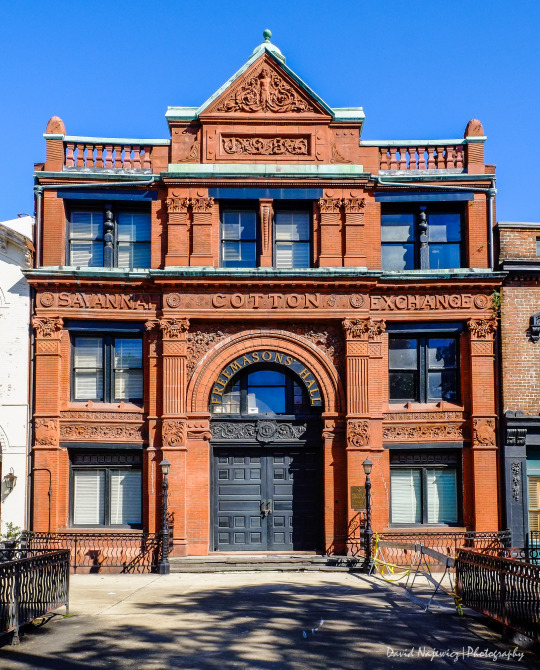
Savannah Cotton Exchange/Freemason Hall - Savannah GA.... must be on an architecture binge the last few days
#historic buildings#savannah#georgia#original photography#photographers on tumblr#lenblr#luxlit#architecture
154 notes
·
View notes
Text
Benedict Cumberbatch and Jude Law read letters about some VERY potent whiskey. 🥃 (old new clip)
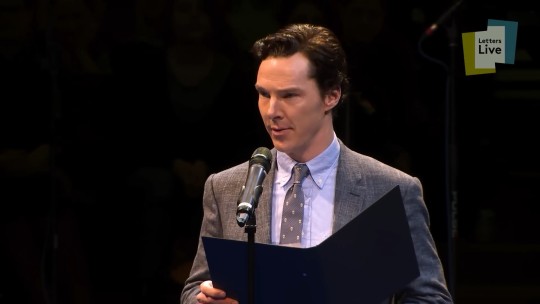


#benedict cumberbatch#jude law#letters live 2016#i think is 2016 at least#Freemasons' Hall#new old video#my post
98 notes
·
View notes
Text
tagged by @monstraduplicia :o) thanks !!
tagging random mutuals, feel free to skip if you don't wanna do this :o) !!
@firstaidspray @dronemetal @pisswater-deadgirl @horrifically @halo--hall @babisawyer @otisdriftwoodsfinalgirl31 @zombf @stigmaticed
Get to know me tag game:
Do you make your bed? - not neatly but I do fold the covers back just to let the sheets breathe and make it a bit cleaner looking
What's your favorite number? - 7, 11, and 17 have always been reoccurring ones for me
What is your job? - to serve @mrcrepsley's every beck and call <3 (I actually don't really wanna answer this)
If you could go back to school, would you? - I dropped out and got my GED for a good reason. I do plan on going to college at the start of the semester in January though cause it's time I get off my ass.
Can you parallel park? - Nope.
A job you had that would surprise people? - Being forced to clean my dad's freemason lodge weekly as a kid. If that even qualifies as a job cause the only payment I recieved was not getting my ass beat.
Do you think aliens are real? - Of course. And I feel very strongly about it.
Can you drive a manual car? - Nope.
What's your guilty pleasure? - I don't feel shame about trivial things. The things I feel guilty for are things I should feel ashamed about so trust me, I ain't letting y'all know.
Tattoos? - Love on my right knuckles and Hate on my left. I plan on getting more but I'm waiting till I get back to the states.
Favorite color? - RED WHITE AND BLUE BABY !! Red being my all time favorite, everything I own is red. Also orange and black and brown I love very much.
Favorite type of music? - If you know me at all you know I listen to a huge variety, damn near just about anything. I always circle back to 70's country rock or nu metal though.
Do you like puzzles? - Not really.
Any phobias? - Like I'd give that away to strangers on tumblr.
Favorite childhood sport? - Baseball, I loved it up until I had my knee replacements and was never really able to pick it back up again.
Do you talk to yourself? - Not out loud, internally all the time
What movies do you adore? - What a dangerous question for me to be asked. I'll keep it short though: anything Rob Zombie has made
Coffee or Tea? - Big fan of both but I stick to tea to limit my caffeine intake
First thing you wanted to be when you grew up? - Aside from the usual silly ones like "vampire" or "demon exorcist" the first actual serious one was a meteorologist, or a storm chaser.
12 notes
·
View notes
Text
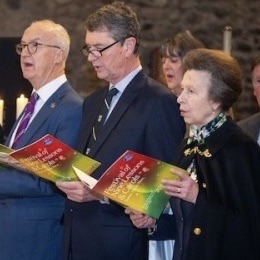


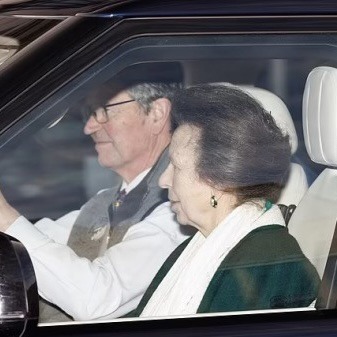

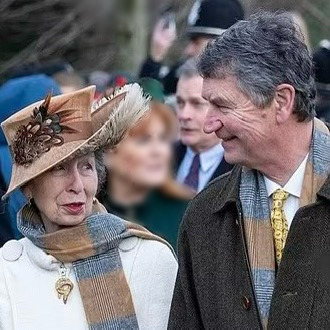
The Princess Royal’s Official Engagements in December 2023
05/12 With Sir Tim As President of the Mission to Seafarers Limited, attended a Festival of Nine Lessons and Carols at All Hallows by the Tower, followed by a Reception at Trinity House in London. 🎶🎄
06/12 As Patron of the Cranfield Trust, attended a Seminar and Reception at Freemasons’ Hall. 🏛️
07/12 As Patron of the Royal College of Emergency Medicine, attended the Annual Diploma and Awards Ceremony at Central Hall Westminster. 🎓💊
13/12 As Patron of Catch22, visited Include London. ⚖️
As President of Racing Welfare, attended a Beneficiaries’ Christmas Luncheon at Epsom Racecourse. 🐎
As Chancellor of the University of London, attended a Dinner at Mansion House, to mark the 200th Anniversary of Birkbeck. 🎓🍽️
14/12 As Court Member of the Fishmongers’ Company, attended the Annual General Meeting and Luncheon at Fishmongers’ Hall. 🎣
20/12 unofficial With Sir Tim Attended the annual Christmas Lunch at Windsor Castle with other members of the royal family 🍽️🎄
24/12 unofficial Attended the Christmas Eve service at St Mary Magdalene church in Sandringham with her husband Sir Tim, King Charles and Queen Camilla. ⛪️🎄
25/12 unofficial Attended the 9am Christmas Day service at St Mary Magdalene church in Sandringham with her husband Sir Tim and other members of the BRF. ⛪️🎄
unofficial Attended the 9am Christmas Day service at St Mary Magdalene church in Sandringham with her husband Sir Tim and other members of the BRF. ⛪️🎄
Total official engagements for Anne in August: 11
2023 total so far: 467
Total official engagements accompanied by Tim in August: 2
2023 total: 92
#princess anne#princess royal#tim laurence#timothy laurence#forgot to post this lol#she didn’t do as many engagements in december bc she celebrated her anniversary over a few days and had a week off before christmas
36 notes
·
View notes
Text
September 19-23, 1824
Lafayette was in Albany (again) on the 19th, the rest he was BACK AGAIN in Manhattan goddamn it

On the 20th, he had dinner in Washington Hall with more than 500 fellow Freemasons
I am fitting this all into one post cause I’m sick :p. So post everything before I get worse
#lafayette’s farewell tour#lafayette farewell tour#lafayette farewell tour board updates#lafayettes farewell tour#marquis de lafayette#lafayette200#my art
8 notes
·
View notes
Photo
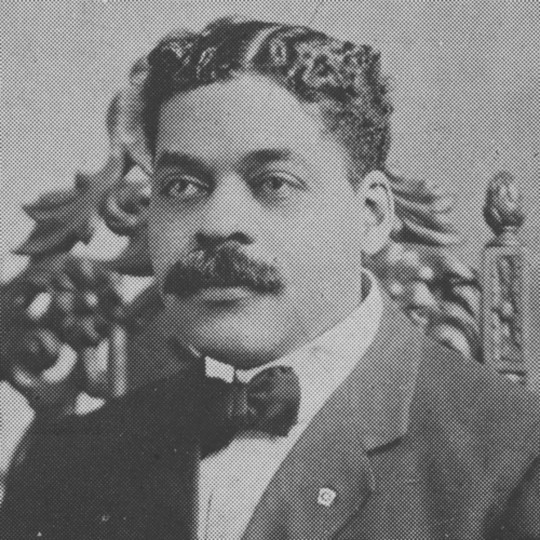



“We need the historian and philosopher to give us with trenchant pen, the story of our forefathers, and let our soul and body, with phosphorescent light, brighten the chasm that separates us. We should cling to them just as blood is thicker than water. American Negro must remake his past in order to make his future.”
...
Arturo Alfonso Schomburg, collector, archivist, writer, activist, and important figure of the Harlem Renaissance was born in San Juan, Puerto Rico on January 24, 1874. His mother was a black woman originally from St. Croix, Danish Virgin Islands (now the U.S. Virgin Islands), and his father was a Puerto Rican of German ancestry.
Seventeen-year-old Schomburg migrated to New York City in 1891. Very active in the liberation movements of Puerto Rico and Cuba, he founded, in 1892, Las dos Antillas, a cultural and political group that worked for the islands’ independence from Spain. After the collapse of the Cuban revolutionary struggle, and the cession of Puerto Rico to the United States, Schomburg, disillusioned, turned his attention to the history and culture of Africa and what we know today as the African Diaspora.
In 1911, as its Master, he renamed El Sol de Cuba #38, a lodge of Cuban and Puerto Rican immigrants, as Prince Hall Lodge in honor of the first African American freemason. The same year, he founded, with journalist John Edward Bruce, the Negro Society for Historical Research which gathered African, Caribbean, and African American scholars. In 1922 he was elected president of the American Negro Academy.
Schomburg firmly believed that “The American Negro must remake his past in order to make his future.” The first part of this process was to reclaim history by evidencing Black people’s contributions to history and culture. Working as a mailroom supervisor at a Brooklyn bank, Schomburg spent his free time and resources, and his retirement after 1930, collecting materials on Africa and its Diaspora. He traveled through the United States, Europe, and Latin America, amassing over 10,000 books, manuscripts, sheet music, photographs, newspapers, periodicals, pamphlets, and artwork.
The second phase of Schomburg’s project was to bring this knowledge to the public. He lent numerous items to schools, libraries, and conferences and organized exhibitions. He wrote articles for a diversity of publications: Marcus Garvey’s Negro World; the NAACP’s The Crisis edited by W. E. B. Du Bois; The Messenger, founded by Socialists A. Philip Randolph and Chandler Owen; the organ of the National Urban League, Opportunity; and Harlem’s newspaper, The Amsterdam News.
In 1926 the Carnegie Corporation bought Schomburg’s collection for $10,000 (about $125,000 today) on behalf of The New York Public Library. The collection was added to the Division of Negro Literature, History and Prints of the Harlem branch on 135th Street.
From 1929 to 1932 Schomburg worked as a curator at Fisk University’s library and was instrumental in expanding its collection from 100 to 4,600 items. Back in New York, he was appointed curator of The New York Public Library’s Harlem Division. He held the position until his death on June 10, 1938 in Brooklyn. He was 64. In his honor, the Division was renamed the Schomburg Collection of Negro Literature, History and Prints in 1940. Arturo Schomburg’s enduring legacy was further acknowledged when the Collection became the Schomburg Center for Research in Black Culture of The New York Public Library in 1972. With over 11 million items, it is one of the world’s foremost research centers on Africa and the African Diaspora.
Legendary.
150 notes
·
View notes
Text
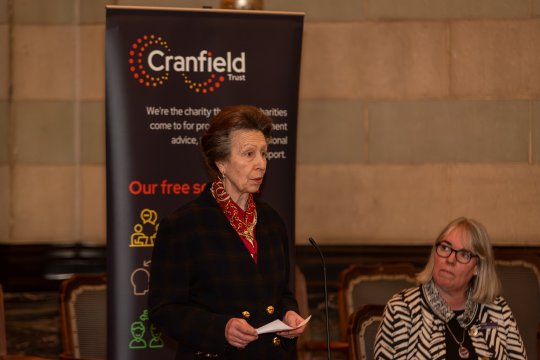
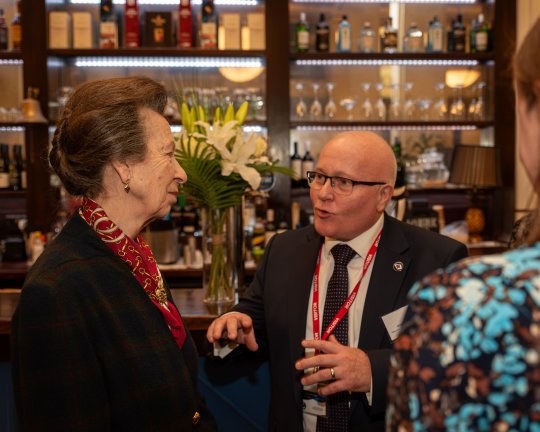

Princess Anne, Patron of the Cranfield Trust, attended a Seminar and Reception at Freemasons’ Hall, London, on 06 December 2023.
#workanne#HER HAIR LOOKS SO SOFT#I'M SURE THAT'S A RECYCLED JACKET#princess anne#princess royal#brf#british royal family
43 notes
·
View notes